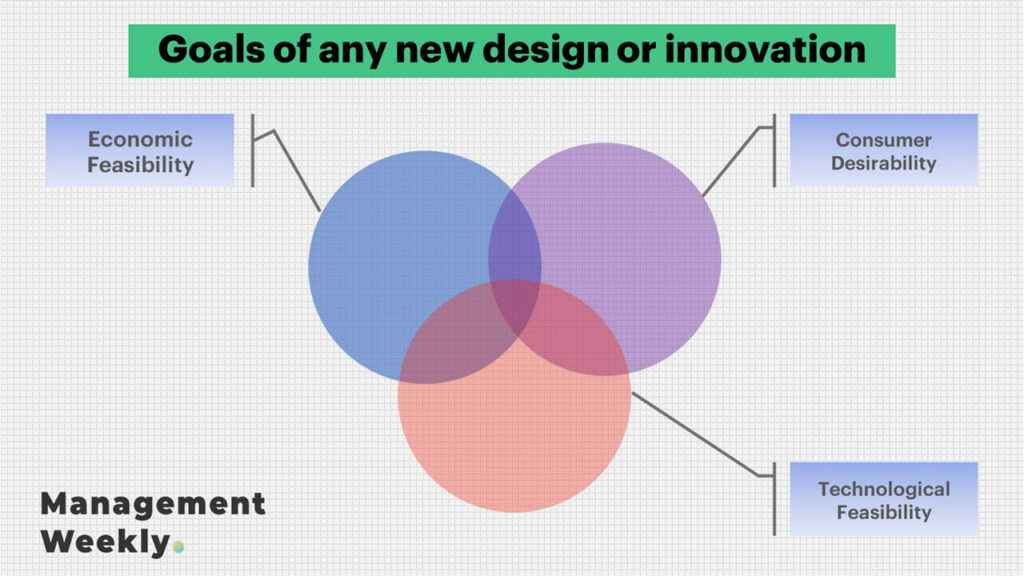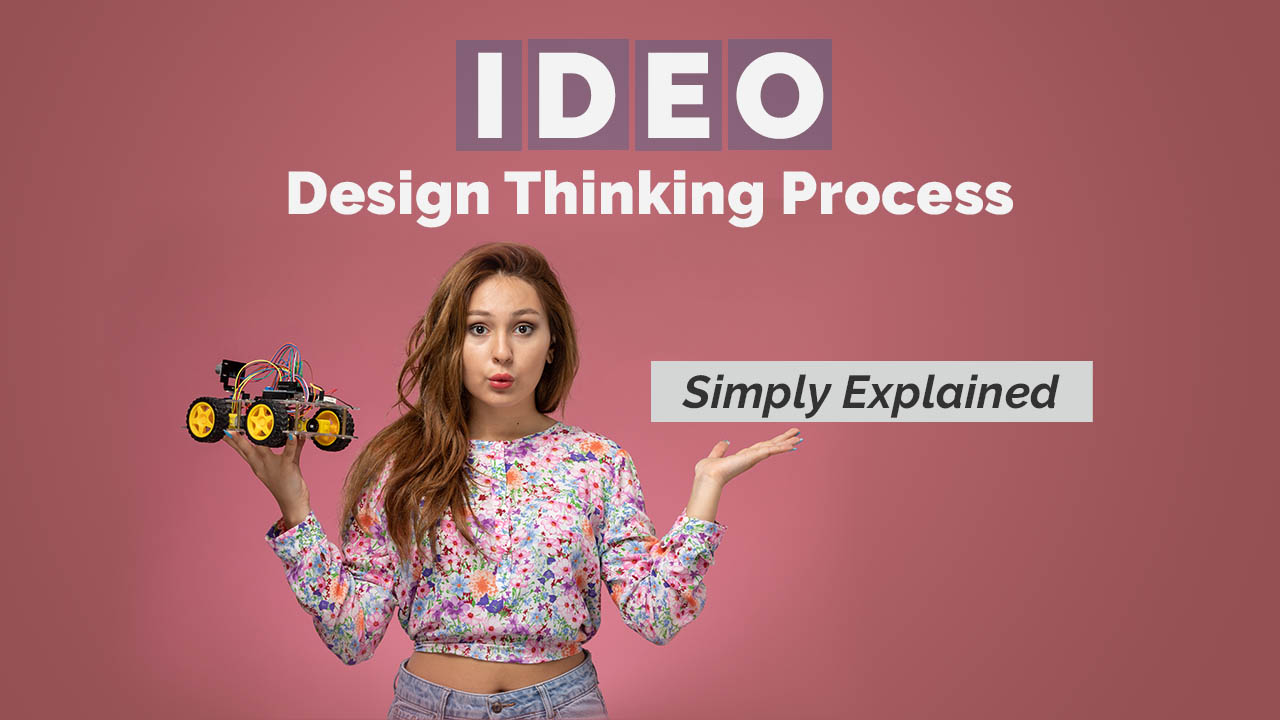IDEO is a pioneering organization of design thinking (DT). They were forerunners of the user-centric design movement in the 1990s. This was even before the term ‘Design Thinking’ became a boardroom lingo. They have carved out a niche for themselves in terms of the quality of consulting and education when it comes to DT. Here we shall take a look at the IDEO Design Thinking Process. We shall also see how it can help us in creating user-centric products and services. Finally, we shall contrast it against an equally popular alternative: Stanford D.School’s design thinking process. This will give us an insight into the subtle differences between the two major schools of DT.
What is Design Thinking ?
One of the most challenging tasks in business is creating something that works well for the firm, its customers, and other stakeholders. It’s a very narrow path to success. Design thinking is an approach where we try to create or optimize products. The main goal of design thinking is to make something that is extremely user-centric. Unlike other methods of new product development, here in DT, the focus is not on finding a correct solution. When we use the standard research and development process we strive towards making a perfect product. On the other hand, the goal of the design thinking process is to improve the products little by little every time. At the very core of these improvements is a relentless pursuit of customer satisfaction.
However, we have to keep in mind the firm’s profits as well as the technical feasibility of these improvements. Therefore, IDEO says that there are three concurrent goals of any design. These are:
- Economic viability – whether the changes are profitable for the firm?
- Consumer desirability – what do the customers want?
- Technological feasibility – is it possible with current technologies to incorporate these improvements?

These goals are extremely important to the success of any product or service. A lot of times we may have a product that may be extremely good at one of these three areas, but poor at the other areas. These kinds of products are not successful in the long run. The IDEO design thinking process prescribes some simple steps as discussed in the next section.
IDEO Design Thinking Steps
IDEO university has pontified the six steps of the IDEO design thinking process:
- Frame a question
- Gather inspiration
- Generate Ideas
- Make Ideas tangible
- Test to learn
- Share the story
You may see some variations of these steps on different websites. However, this is the correct form of the design thinking process as provided by the IDEO university. I shall be taking the example of Airbnb to explain these steps.
Frame a question
One of the core principles of design thinking is customer-centricity. Framing the question is one of the most important steps of this entire IDEO design thinking process. In this step, the first question that we ask is who is our customer. It is also important to go beyond the traditional rhetoric of segmentation targeting and positioning we need to take a deep dive into the understanding of customers. This is especially important because we are trying to optimize a product or launch a new product in the market. Therefore we need to understand who is our target customer.
The second question that we need to ask is regarding the customers’ needs. It is imperative that we understand that needs may not be manifested easily. Many companies run customer surveys to understand the explicit needs of the customer. Leading firms understand the value of going beyond the explicitly specified needs. Pin rightly said by Henry Ford that if he would have asked his customers that what did they want. He would have simply said that they wanted faster horses. Therefore we need to go deeper and understand that what are the pain points of the customer.
In the case of Airbnb, the founders saw that in spite of traffic on their website few people were booking the rooms. They wanted to know the reason behind this. It could be due to some problem that the customers were facing.
Gather inspiration
The second step of the DT process is gathering inspiration. Phones that capitalize on the design thinking process also put in a lot of effort to understand the customer. We have got different means and mechanisms to gather inspiration for innovation. The first source of this inspiration can come from customer journey mapping. Customer journey mapping is a process by which we follow a customer in their shopping journey. On one hand, we can put ourselves in the shoes of the customer and try to replicate the entire purchase process. We can also follow a customer and see that what processes and touch-points they go through. When we close we follow our customers that can also give us some insights about the customers’ pain points.
The founders of Airbnb put themselves in the shoes of the customer. Consequently, they were able to appreciate the problems that the customers faced on their website. Images that were displayed for the hotel rooms were not up to the mark. Of them were shot by smartphones. The rooms were badly lit. Therefore many users did not end up booking the rooms.
Generate ideas
Once you have the pain points of the customer you can try to find solutions to these pain points. There are two things to keep in mind in this regard. A lot of times we just try to find the first possible solution. Then we stop and that solution and don’t look for a better solution. It was a more robust approach would be to keep looking for an answer till you are satisfied. You can try one of the three types of brainstorming to come up with fresh ideas.
The team at Airbnb wanted to find a solution to this problem. Obviously one of the easiest solutions would be to set up some rules and regulations. The room owners may be asked to upload better-quality pictures on the website. However, this solution may not work well. One of the reasons for this not working is that the owners may not be an expert in photography. Secondly, there would be no benchmark or reference point for them to target.
Make ideas tangible
This concept comes from the field of research and development. When we are trying to do R&D for a new product we design models and test them. These models are smaller or scaled versions of the original design. Therefore we can develop these models quickly and at a lower cost. These scale models are also known as prototypes. Once these prototypes are ready we can test them to find out the best one.
The team at Airbnb decided that day should intervene and optimize the photographs for some of the hotels. This small-scale testing of their idea is just like a prototype.
Test to learn
Once our prototypes are ready we have to test them. For example, car companies make prototypes for their vehicles. These prototypes are crash tested to see whether they would stand the force of an accident or a collision. Once you have this data, you will know that what are parameters that you have to optimize. After which you can then build new prototypes that are better than the previous ones.
In the same vein, the team at Airbnb also decided to test out their idea about the photographs. They visited live locations and took high-quality photographs with digital cameras. After they uploaded this photograph for those properties they started analyzing the data. This and instant increase in the number of booking for these properties. Therefore they were able to find support for their proposed changes. Dekho now ask each of the hotel owners to try to put a photograph that was similar to their photographs. The users had to simply light the room well and they would have to click photographs using proper angles and good quality cameras.
Share the story
This is the final step of the design thinking process proposed by IDEO. What’s the storyline for your solution are ready you have to share it with the relevant people inside the organization. This story should not just inform them about the potential solutions. It should also inspire them to serve the customer’s needs.
Therefore the Airbnb founding team communicated their success story to the property owners. They shared the output of their experiment and asked them to improve the quality of photographs for their listings. In no time the company saw a massive increase in the number of bookings. Therefore by applying the principles of design thinking Airbnb was able to improve its market share.

1 thought on “IDEO Design Thinking Process – Simply Explained”